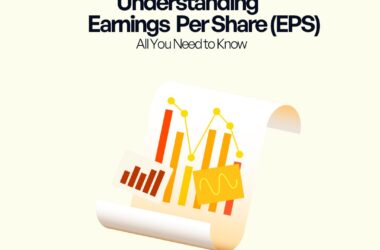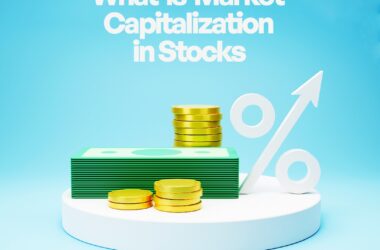Imagine that there are 1,000 people interested in buying Apple stocks for $10 and they’re willing to pay $10 each. But there’s a catch: only 500 people offer their shares at that price. So the first lucky 500 buyers grab their shares for $10 each. However, the remaining 500 buyers who were left empty-handed started to think. “What if we increase our bargain to $11 per share? Will the sellers sell to us instead?”
Of course, it’s a good idea, and who doesn’t like the idea of more money?
So, they increased their offer to $10. Suddenly, some owners of the Apple stocks who were initially hesitant to sell at $10 start to think, “Hmm, maybe $11 is worth considering!”
Intrigued by the higher offer, a few sellers decided to take advantage of the opportunity and sell their shares at $11. And just like that, the latest transaction sets a new price for the stock. Now, instead of $10, the stock price is $11.
It’s a classic tale of — Economics 101— supply and demand. When there are more buyers than sellers, prices can rise as buyers compete for limited stock. In this case, the higher offer enticed some sellers to jump in, ultimately shaping the new stock price.
Since high demand drives the stock price higher, what causes the initial increase in demand?

Why Do Stocks Fluctuate?
Stocks fluctuate in value due to various factors, and two important metrics that contribute to these fluctuations are earnings-based measures, such as earnings per share (EPS), and valuation multiples, such as the price-to-earnings (P/E) ratio.
1. Earnings Per Share (EPS)
Earnings per share (EPS) is a key financial indicator that reflects a company’s profitability. It represents the portion of a company’s earnings allocated to each outstanding share of common stock. EPS is calculated by dividing the company’s net income by the total number of shares outstanding. Higher EPS indicates greater profitability, which can positively impact a stock’s value.
When a company reports higher-than-expected EPS, it can increase investors’ confidence and attract more buyers, causing the stock price to rise. Conversely, lower-than-anticipated EPS might lead to disappointment among investors, potentially resulting in a decline in the stock price. Therefore, fluctuations in a company’s earnings and its ability to meet or exceed market expectations can significantly influence stock prices.
2. Price-to-earnings (P/E) Ratio
Valuation multiples, such as the price-to-earnings (P/E) ratio, provide investors with a measure of how much they are paying for a company’s earnings. The P/E ratio is calculated by dividing the market price per share by the earnings per share.
It helps investors assess the relative value of a stock compared to its earnings potential. The P/E ratio is an essential tool for investors seeking to gauge whether a stock is overvalued, undervalued, or fairly priced.
A higher P/E ratio indicates that investors are willing to pay more for each unit of earnings, suggesting optimism about the company’s prospects. In contrast, a lower P/E ratio may indicate that the stock is considered relatively inexpensive, potentially attracting value investors.
Technical factors Can Make Stock fluctuate
1. Inflation: When inflation is low, it tends to lead to higher stock valuations. This means that stock prices can increase because investors have more confidence in the economy. It’s like a positive signal that things are going well. On the other hand, when inflation is high, stock valuations tend to be lower. This happens because investors may worry about the impact of rising prices on a company’s profitability.
Deflation, which is the opposite of inflation, is generally not good for stocks. It means that prices are going down, and this can harm companies because they may have trouble selling their products or services at profitable prices.
2. Trends: Sometimes, a company’s stock fluctuates due to short-term trends. Let’s simplify it:
When a stock is on an upward trend, it can gain momentum and continue to rise. This happens because people see its success and become interested. This interest increases the stock’s value. It’s like a popularity boost that keeps driving the stock higher.
However, there are also times when a stock behaves differently and reverts to the average. This means that after a period of going up or down, it tends to return closer to its average value. It’s like a balancing act that brings the stock back to a more typical level.
While these patterns are interesting to observe, they don’t provide a reliable method for predicting future stock movements.
3. News: News and unexpected events can have a significant impact on investor sentiment and can influence stock prices. Examples include political situations, industry developments, global events, and the company’s earnings. Political situations, industry developments, and events can affect how investors perceive a company or the stock market.
The release of a company’s earnings report can also cause stock prices to fluctuate depending on if it’s positive or not. Strong earnings generally result in stock prices rising, while weak earnings may lead to stock prices falling. However, investor expectations for a company’s future profitability can drive stock prices up, even if current earnings are not impressive.
Read: Bull and Bear Market: What is the Difference?
Conclusion
Stock prices fluctuate depending on both internal and external factors. Even a statement from the CEO of a company registered in the stock market can affect their stock price positively or negatively. The best way to stay ahead of stock news is to research them. Luckily for you, we do weekly roundups of top stock market news weekly via our newsletter. You should sign in.
On our socials, we share educational content to help you make the most from investing in the stock market. Follow us on Twitter or Instagram @trovefinance. You can also tweet your questions to @trovefinance. We’ll gladly reply.
Cha cha! See you in the next update







